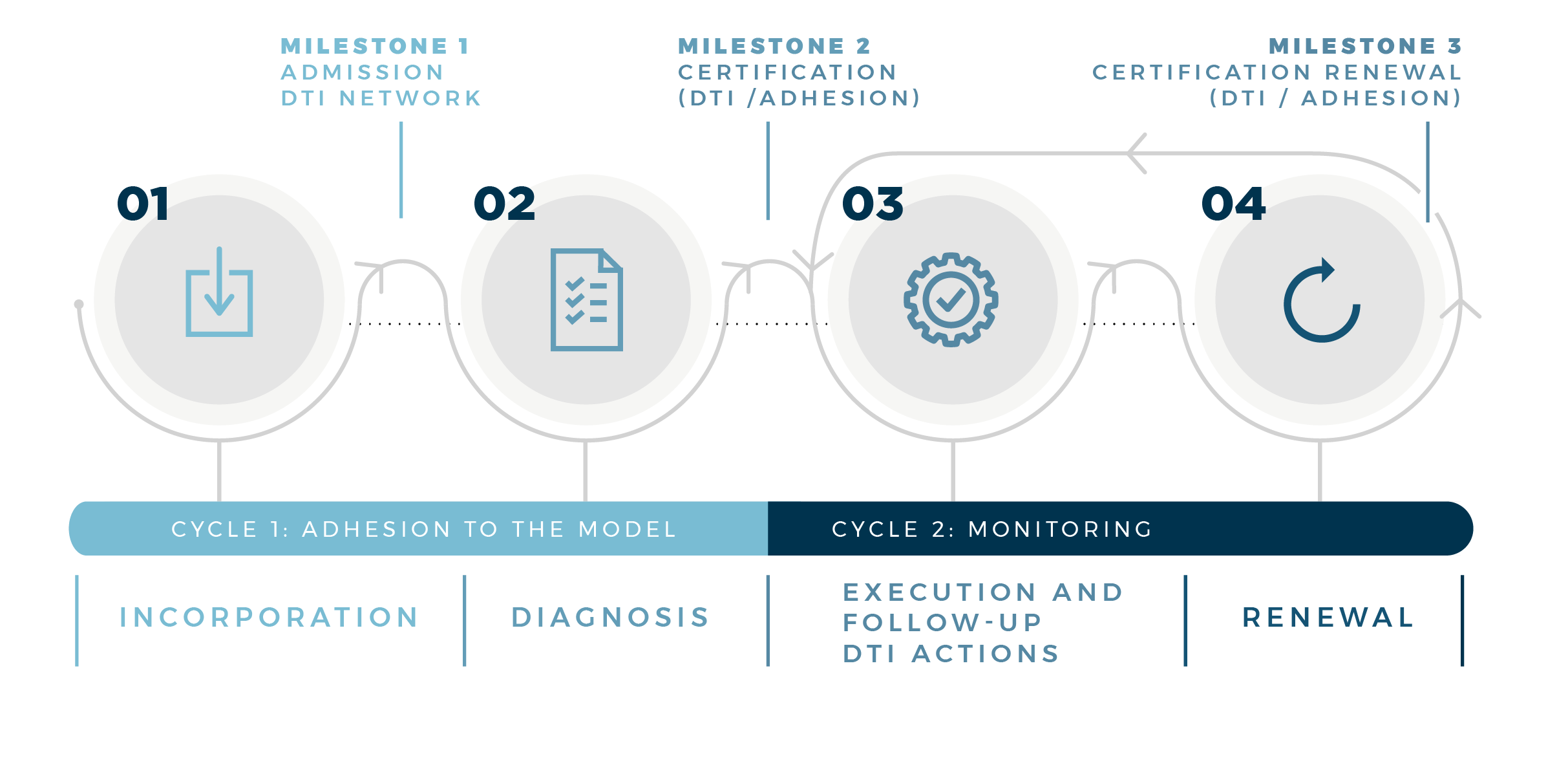The Smart Tourism Destination methodology is structured around the pillars supporting the Smart Tourism Destination Programme: governance, innovation, technology, sustainability and accessibility. Its effective implementation relies on the close coordination of all the areas and all the public and private agents that directly or indirectly make tourist activity possible within the territory. The aim is to build a common working framework to identify needs and priority actions before initiating the process of becoming a recognised Smart Tourism Destination.

State Society for the Management of Innovation and Tourism Technologies
The entity tasked with implementing the Smart Tourism Destination methodology across the territories is State Society for the Management of Innovation and Tourism Technologies – SEGITTUR, upon the mandate of the Spanish Secretary of State for Tourism.
The methodology is aimed at the following types of public authorities: municipalities, counties, associations of municipalities and autonomous cities, which are the entities most closely and directly involved in the management of destinations. All other public authorities, such as in the case of Spanish provincial or island councils take part in the Smart Tourism Destination Programme as promoters of the model through various initiatives contributing to its dissemination and effective implementation.
The path to becoming a Smart Tourism Destination is divided into two cycles and five phases. Recognised Smart Tourism Destinations must regularly renew their commitment to prove continuous improvement.

Cycle 1: Diagnosis and planning
The methodological process starts upon receiving a diagnosis request from the destination, which undertakes to implement the Smart Tourism Destination action plan and formalise its membership in the Smart Tourism Destinations Network (Phase 1 – Admission).
Upon acceptance of the application, the Diagnostic Phase (Phase 2) begins, the outcome of which sets the baseline or starting point for the entire conversion process to Smart Tourist Destinations distiction. A total of 97 requirements and 261 indicators – distributed across the five pillars – are then used to assess the degree of maturity of the destination in relation to the methodology and a list of recommendations is generated in order to draw up an action plan.
Phase 3 – Strategy and Planning defines the process for implementing the actions envisioned in the Smart Tourist Destination action plan, from prioritization and scheduling through to identification of those responsible, including investment needs, if any.
Upon completion of these phases, the destination can be distincted as a Smart Tourism Destination by achieving a degree of compliance equal to or higher than 80% of the requirements. If it falls short of this percentage, it will qualify as a Smart Tourist Destination Associated to the programme. In both cases, it moves on to cycle 2 – Implementation and Monitoring.
Cycle 2: Implementation and monitoring
During this cycle, the action plan is implemented and the accreditation undergoes regular monitoring and renewal.
Associated Smart Tourism Destinations move to Phase 4 and proceed to implement the proposed actions. They must renew their accreditation every two years by showing the progress they have made. Once the Action Plan has been put in place and the necessary degree of compliance has been achieved, they will earn Smart Tourist Destination distinction, thus moving on to Phase 5 – Renewal.
All destinations recognised as Smart Tourist Destinations enter the Renewal phase, whether they come directly from Phase 3 (Cycle 1) or from Phase 4. There they remain within a continuous monitoring process to certify that they continue to meet the standards set by the Smart Tourism Destination methodology, thus guaranteeing the objectives pursued by the programme of ensuring a new tourism governance structure driven by knowledge and the use of technology and innovation. The renewal process takes place every two years to validate compliance with all Smart Tourism Destination requirements and indicators.
More than than 100 national and international destinations have embarked on the process of becoming a Smart Tourism Destination
Their successes illustrate the benefits and advantages of the Smart Tourism Destination Programme.
Contact us to learn more about the Smart Tourism Destination Programme.


